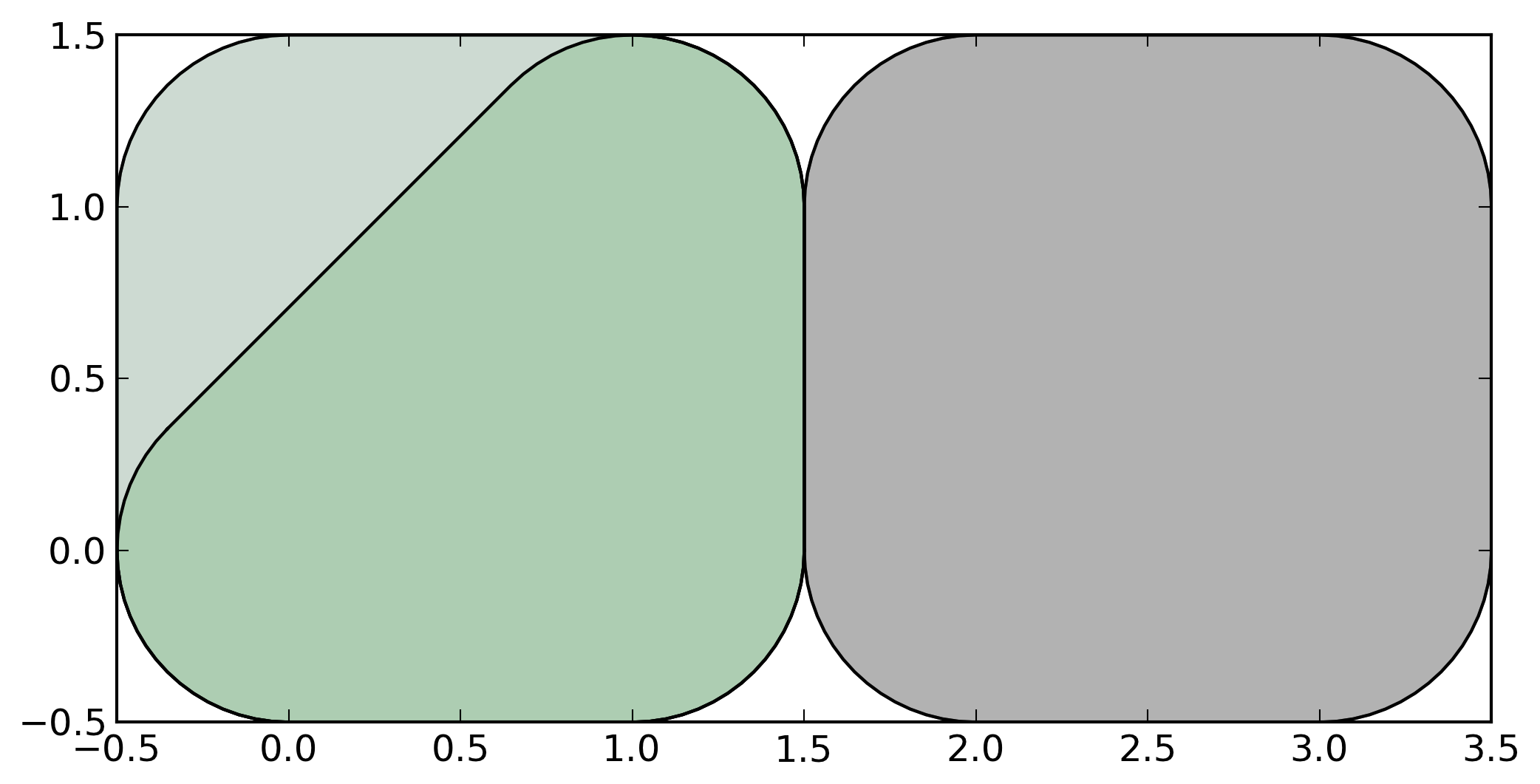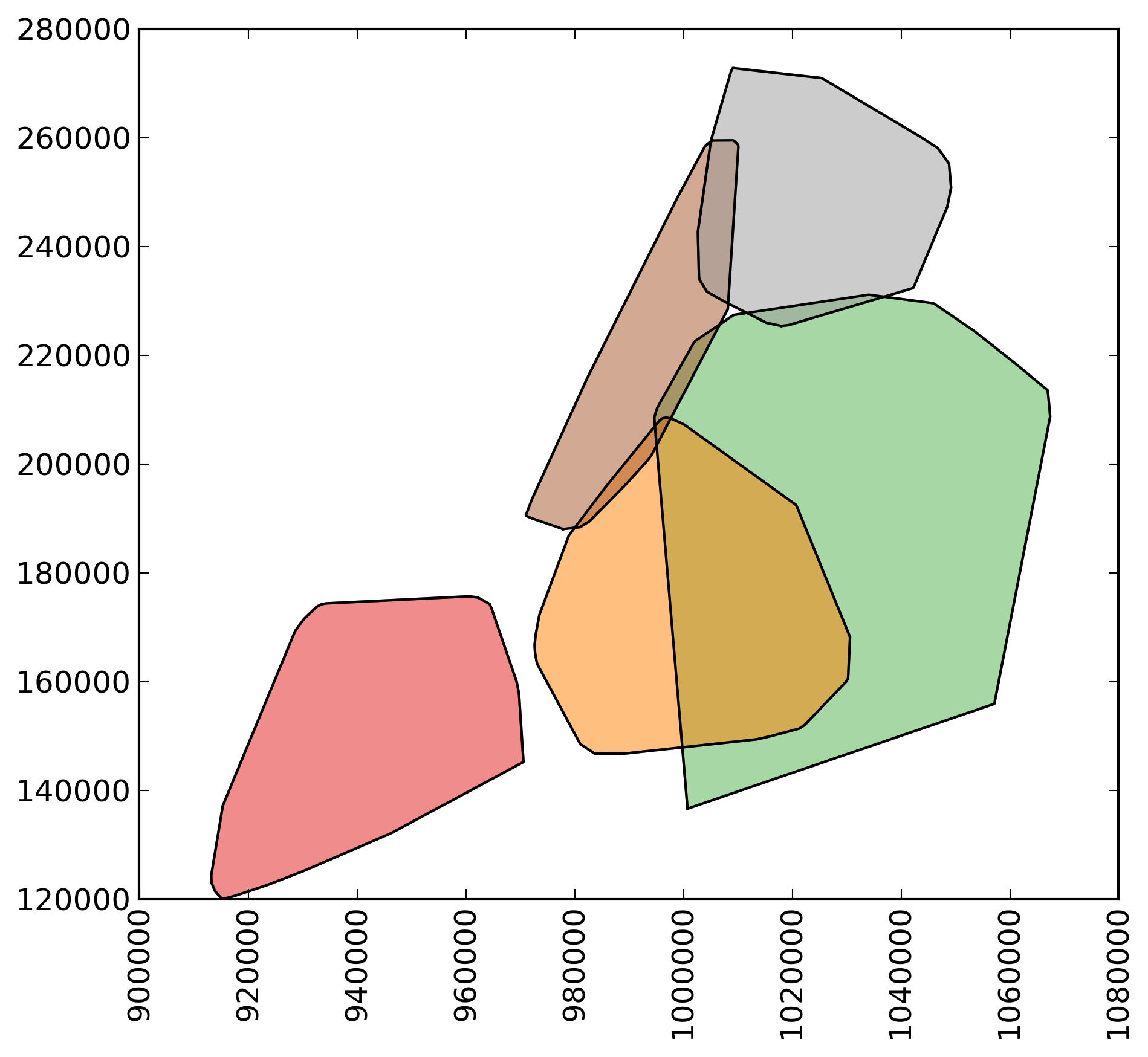GeoPandas 


Python tools for geographic data
Introduction
GeoPandas is a project to add support for geographic data to
pandas objects. It currently implements
GeoSeries and GeoDataFrame types which are subclasses of
pandas.Series and pandas.DataFrame respectively. GeoPandas
objects can act on shapely
geometry objects and perform geometric operations.
GeoPandas geometry operations are cartesian. The coordinate reference
system (crs) can be stored as an attribute on an object, and is
automatically set when loading from a file. Objects may be
transformed to new coordinate systems with the to_crs() method.
There is currently no enforcement of like coordinates for operations,
but that may change in the future.
Documentation is available at geopandas.org (current release) and Read the Docs (release and development versions).
Install
Requirements
For the installation of GeoPandas, the following packages are required:
pandasshapelyfionadescartespyproj
Further, rtree is an optional
dependency. rtree requires the C library libspatialindex. If using brew, you can install using brew install Spatialindex.
Install
Then, installation works as normal: pip install geopandas
Examples
>>> p1 = Polygon([(0, 0), (1, 0), (1, 1)])
>>> p2 = Polygon([(0, 0), (1, 0), (1, 1), (0, 1)])
>>> p3 = Polygon([(2, 0), (3, 0), (3, 1), (2, 1)])
>>> g = GeoSeries([p1, p2, p3])
>>> g
0 POLYGON ((0.0000000000000000 0.000000000000000...
1 POLYGON ((0.0000000000000000 0.000000000000000...
2 POLYGON ((2.0000000000000000 0.000000000000000...
dtype: object
Some geographic operations return normal pandas object. The area property of a GeoSeries will return a pandas.Series containing the area of each item in the GeoSeries:
>>> print g.area
0 0.5
1 1.0
2 1.0
dtype: float64
Other operations return GeoPandas objects:
>>> g.buffer(0.5)
Out[15]:
0 POLYGON ((-0.3535533905932737 0.35355339059327...
1 POLYGON ((-0.5000000000000000 0.00000000000000...
2 POLYGON ((1.5000000000000000 0.000000000000000...
dtype: object
GeoPandas objects also know how to plot themselves. GeoPandas uses descartes to generate a matplotlib plot. To generate a plot of our GeoSeries, use:
>>> g.plot()
GeoPandas also implements alternate constructors that can read any data format recognized by fiona. To read a file containing the boroughs of New York City:
>>> boros = GeoDataFrame.from_file('nybb.shp')
>>> boros.set_index('BoroCode', inplace=True)
>>> boros.sort()
>>> boros
BoroName Shape_Area Shape_Leng \
BoroCode
1 Manhattan 6.364422e+08 358532.956418
2 Bronx 1.186804e+09 464517.890553
3 Brooklyn 1.959432e+09 726568.946340
4 Queens 3.049947e+09 861038.479299
5 Staten Island 1.623853e+09 330385.036974
geometry
BoroCode
1 (POLYGON ((981219.0557861328125000 188655.3157...
2 (POLYGON ((1012821.8057861328125000 229228.264...
3 (POLYGON ((1021176.4790039062500000 151374.796...
4 (POLYGON ((1029606.0765991210937500 156073.814...
5 (POLYGON ((970217.0223999023437500 145643.3322...
>>> boros['geometry'].convex_hull
0 POLYGON ((915517.6877458114176989 120121.88125...
1 POLYGON ((1000721.5317993164062500 136681.7761...
2 POLYGON ((988872.8212280273437500 146772.03179...
3 POLYGON ((977855.4451904296875000 188082.32238...
4 POLYGON ((1017949.9776000976562500 225426.8845...
dtype: object




